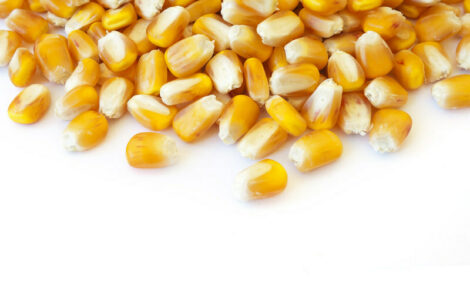



Future of the Swine Industry in North Carolina
By Kelly Zering , Associate Professor and Extension Specialist Department of Agricultural and Resource Economics North Carolina State University and presented at the Northeastern Regional Pork Conference, February 2007.The future of the swine and pork industries in North Carolina depends on their comparative advantage versus other states and other countries. Economists consider comparative advantage when analyzing the presence of an industry at a location. “Comparative” advantage differs from “absolute” advantage. Comparative advantage refers to the ability to produce a good or service at the lowest cost and highest profit relative to other goods or services that can be produced at that location. Absolute advantage refers to the ability to produce a good or service at the lowest cost and the highest profit compared to any other location. In other words, even though some other places may be able to produce pigs and pork at lower cost and higher profit than North Carolina, they may have found other activities to be even more profitable while North Carolina found pigs and pork to be one of the most profitable enterprises available.
North Carolina demonstrated comparative advantage in the production of pigs and pork by increasing pig and pork production rapidly between 1988 and 1997 and by sustaining production since a state moratorium on building new pig production facilities was adopted in 1997. Swine production currently generates about 25 percent of North Carolina’s gross farm receipts. Below is a brief overview of several issues that could affect North Carolina’s comparative advantage in pig and pork production in the future.
Feed Prices and Ethanol
The United States has been a low-cost producer of corn and soybean meal for several decades. As staples of swine and poultry diets and cattle finishing diets, low-cost corn and soybean meal have provided an absolute advantage for U.S. livestock and poultry producers. North Carolina has been a net importer of corn and soybean meal for decades and has been at a slight absolute disadvantage to Midwestern states with respect to livestock feed costs. The U.S. advantage in swine feeding has been brought into question lately as corn prices recently rose past $4 per bushel after having averaged about $2.50 per bushel over the last five years. Is $4 corn a temporary phenomenon or is it a new standard?
One factor raising concern about the possible permanence of higher corn prices is the rapid expansion in use of corn to produce ethanol for vehicle fuel. Domestic ethanol consumption for fuel rose from 1.8 billion gallons in 2001 to 3.4 billion gallons in 2004. During the 2005/2006 corn marketing year, an estimated 1.6 billion bushels of corn were consumed to produce 4.3 billion gallons of ethanol for fuel. U.S. ethanol production capacity increased to 6.3 billion gallons by the end of 2006 (Yacobucci). President Bush has stated a goal of reducing Middle East oil imports by 75 percent by 2025. This goal could require increasing ethanol production to 60 billion gallons per year. Research and development are under way to produce ethanol from cellulose in plants such as switchgrass so corn will not be the sole source of ethanol. It is unclear when alternative sources of ethanol feedstock will become commercially viable. Imported ethanol and feedstocks may also supply part of the quantity demanded. Other alternative fuels are also expected to meet some of the demand.
Policy promoting alternative fuels has provided strong incentives for ethanol production. Federal law in 2004 replaced an excise tax exemption with a $0.51 per gallon tax credit for ethanol used in blended fuel through 2010 (Yacobucci). At 2.7 gallons of ethanol per bushel of corn, this tax credit is the equivalent of $1.38 per bushel of corn used for fuel ethanol. The Energy Policy Act of 2005 created a renewable fuels standard that requires at least 4 billion gallons of renewable fuels to be used in 2006, with the minimum increasing by 0.7 billion gallons per year to 7.5 billion gallons in 2012. The policies were adopted to begin to reduce dependence on foreign oil and to reduce undesirable air emissions from vehicles. Recent high prices for gasoline have made fuel ethanol from corn very profitable.
High corn prices have adverse effects on livestock and poultry producers. If it takes 7.4 bushels of corn to raise a market hog from feeder pig stage, then an additional $1.50 per bushel of corn adds more than $11 to the cost of finishing a hog. If 10.8 bushels of corn are needed to raise a hog from breeding to finish, then almost $16 are added to cost of production. Some cost savings may be achieved by reduced costs of soybean meal due to the large supply of dried distillers grain that is produced by the ethanol plants. However, if costs of pig production rise 12 percent, for example, then a reduction of about 12 percent in U.S. pig production will be required to raise pig prices enough to cover the added cost. All pig producers will suffer losses while the adjustment in pig supply is occurring. It is likely that the higher-cost farms and those least able financially to survive the losses will exit pig production. Production in other countries may increase to offset some of the reduced supply from the U.S. Within the U.S., advantage may shift slightly to states with seaports or proximity to foreign feed grain supplies.
The financial effect of losses during the transition is most severe on states such as North Carolina with limited grain production and large livestock and poultry production. North Carolina has about 3 percent of the U.S. population and so currently bears the cost of about $76 million of the $2.55 billion annual tax credit for fuel ethanol. North Carolina produces about 84 million bushels of corn and could gain $126 million per year if corn prices rise by $1.50 per bushel. North Carolina consumes an estimated 305 million bushels of corn per year for chickens, pigs, turkeys, cattle, and other livestock, so an increase of $1.50 per bushel will cost more than $457 million per year. The net direct cost to North Carolina is $405 million dollars annually. Other secondary effects on farm income and employment are not discussed here. Ultimately, the costs will be passed on to taxpayers and to consumers in the form of higher food prices. Research and development of new feedstocks for renewable fuels may create demand for agricultural waste and for new commodities from agricultural and forested land in North Carolina.
Land and Population
The availability of land in sufficiently large tracts and at sufficiently low price was one of the characteristics of rural North Carolina that created the comparative advantage for swine production here. Population density is higher in rural North Carolina than in other agricultural states. However, it is not so high that land prices are high or that large enough tracts of land cannot be found. In some parts of North Carolina, population has been growing and the price of land has been rising. Land that was in farms or forest is being converted to subdivisions, shopping malls, offices, schools, and other facilities.
A recent population projection by the U.S. Census Bureau predicts that the population of North Carolina will rise from 8.05 million in the year 2000 to 12.23 million in 2030. This projected growth in population of 4.18 million is fifth among all states, trailing only Florida, California, Texas, and Arizona. The populations of some counties, including Wake and Johnston, are projected to double between 2000 and 2030. Some major swine-producing counties, including Sampson and Duplin, are projected to experience 50 percent population growth. Some other rural counties are projected to experience less growth, and some will decline in population. Rising population will reduce the comparative advantage of swine production in some locations. Already, some long tenured swine producers in North Carolina are evaluating the option of selling their farms for real estate development. Changing land use in some locations, combined with the moratorium, increases the need for the option to sell or transfer manure application permits from one location to another. Failure to adopt this option will cause swine farms to remain in inefficient locations longer than they would otherwise.
Environmental Regulations
A variety of environmental regulatory issues remain undecided. A consent agreement between the U.S. EPA and livestock producers is allowing research to be conducted on the composition and rate of air emissions from livestock farms. It is likely that the Clean Air Act terms affecting livestock farms will be reconsidered, once more information is available. Terms of the revisions of the Clean Water Act affecting livestock farms have been written, but court challenges have slowed implementation. Concerns and fears over odor, flooding, and public health remain for some. Fresh water use will continue to increase in importance as an issue where population and demand for water are increasing.
A great deal of original research into alternative manure management systems for North Carolina was completed under the Attorney General’s agreements with Smithfield Foods, Premium Standard Farms (PSF), and Frontline Farmers. One on-farm system and four secondary solids treatments attained the five stringent emissions standards set out in the agreements. But none of the five systems satisfied the economic feasibility criterion set out in the agreements. Several other technologies were lower-cost but failed one or more of the emissions criteria. Some followup projects are ongoing as technology providers try to reduce the cost and/or emissions from the alternative systems.
New economic incentives to reduce greenhouse gas emissions and to produce energy on the farm, along with rising costs of nitrogen fertilizer, are changing the economics of alternative manure management systems. Rapid evolution of manure management systems in North Carolina is likely. These changes may enhance North Carolina’s comparative advantage because of the mild winters here. Continued multidisciplinary evaluation and design of alternative manure management systems and markets for products is needed.
Antibiotics
Concern over antibiotic-resistant pathogens continues the focus on withdrawal of subtherapeutic levels of antibiotics from livestock feed. Regulatory withdrawal of growth-promoting antibiotics could reduce the comparative advantage of the U.S. versus foreign competitors to the extent that such use of antibiotics reduces cost and/or improves quality. A number of producers are already differentiating their pork by certifying that antibiotics were not fed to the pigs. Again, this issue may enhance North Carolina’s comparative advantage within the country, given the mild winters here.
Animal Welfare
Concerns over the use of gestation crates have been the subject of ballot initiatives and court cases in recent years. Smithfield Foods and Maple Leaf Foods in Canada recently announced intentions to voluntarily remove gestation crates from their production systems. To the extent that the shift away from gestation crates raises production costs, it would reduce the comparative advantage of swine producers in the U.S. and Canada versus other countries. If there is no net cost, no change in advantage may occur unless consumer acceptance of the product is enhanced.
A new initiative to create the next generation of swine housing is needed to address the concerns of animal welfare, manure management, air emissions, odor, and public health. A number of the innovations that created the current generation of swine housing occurred in North Carolina (e.g. slatted floors). The ingenuity and will to innovate create a comparative advantage for North Carolina.
Packing Capacity
Swine production and pork packing are mutually dependent for comparative advantage. The acquisition of PSF by Smithfield Foods has raised concerns about the loss of choice for North Carolina swine producers. The presence of profitable, stable packers and pig producers is critical to sustaining comparative advantage here.
Other Opportunities and Demand for Resources
Capable labor is in short supply in the swine and pork industries in many parts of the country. The ability to train and retain capable people will be critical.
March 2007








